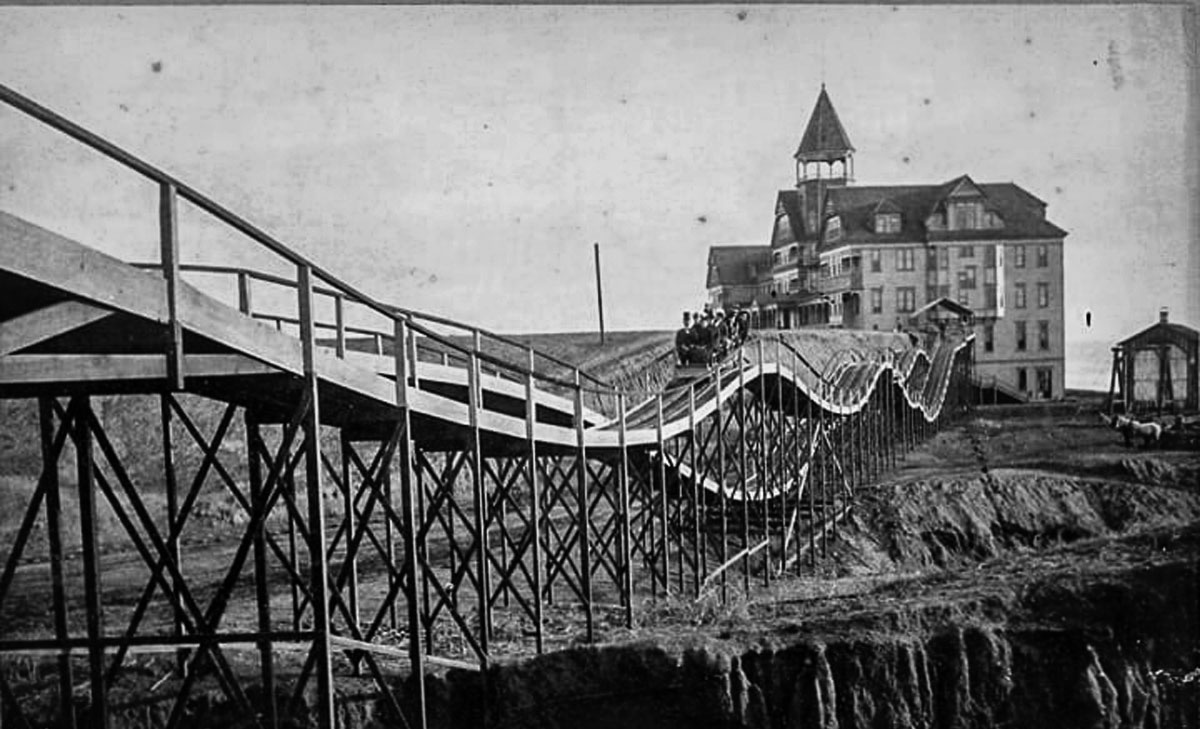Early versions of the roller coaster weren’t really roller coasters at all. In the mid-1600s, the Russians developed ice slides, which are widely considered the earliest precursors to modern roller coasters. There are also accounts of attractions in Paris in 1817 that we would think of as roller coasters today. In 1873, the Mauch Chunk Switchback Railroad, which is generally regarded as the first roller coaster in the US, was created from a repurposed coal mining train in Pennsylvania. In 1884, America’s first commercially successful and recognizable roller coaster, the Gravity Switchback Railway, opened at Coney Island. It was patented, built, and operated by LaMarcus Adna Thompson.
While he didn’t invent the roller coaster, Thompson improved and popularized it so effectively that he is considered the father of the roller coaster. Following the debut of Thompson’s ride, countless other roller coasters began to pop up all across America. In fact, the early 1900s is considered the “golden age of the roller coaster” because there were around 2,000 of them operating all across the country! Sadly, most of these early roller coasters have been lost to damage or demolition. However, a few of these classic wooden roller coasters remain, including the Jack Rabbit, which opened in 1920 at Kennywood in Pennsylvania; the Wildcat, which opened in 1927 at Lake Compounce in Connecticut; and the Cyclone, which famously opened in 1927 at Coney Island.
A renaissance in roller coasters began in 1959 when Walt Disney directed his “imagineers” to build the Matterhorn ride. Disney personnel worked with a ride manufacturer to create a tubular steel track system and trains with polyurethane wheels, thus revolutionizing roller coaster design. Their innovations allowed ride manufacturers to incorporate loops, corkscrews, and other inversions on their tracks; these innovations also allowed for the eventual creation of taller, faster roller coasters, such as the record-breaking rides at Cedar Point in Ohio. Today, ride makers continue to create unique new tracks and riders continue to enjoy the thrill of roller coasters.



